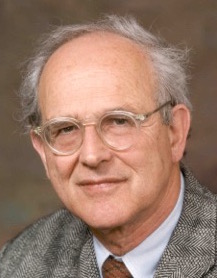Rainer Weiss
Massachusetts Institute of Technology

Rainer Weiss Massachusetts Institute of Technology |
 |
After some history of gravitational waves, Prof. Weiss will follow with a description of the waves and the technique for detecting them. He will present and discuss the observations and end with a vision for the future of gravitational wave astronomy and astrophysics.
Rainer Weiss was born on September 29, 1932, in Berlin, to a neurologist father and an actress mother. He received his B.S. in 1955 and his Ph.D. in 1962, both from the Massachusetts Institute of Technology. After a post doctoral appointment at Princeton, he has spent virtually his entire career at MIT as a researcher, professor, and, since 2001, professor emeritus.
After leaving Germany in 1933 for Czechoslovakia, his family fled the oncoming Nazis in 1939 (his father was Jewish) and settled in New York City, where Weiss received a scholarship from the Columbia Grammar and Preparatory School. As a teenager he embarked on a career fixing radios and constructing home sound systems, the kind of technological work that he would later adapt in the design of laser interferometers. As an undergraduate junior he “flunked out” of MIT and became a technician in the atomic physics research laboratory of Jerrold Zacharias which was working on atomic clocks. The possible application of the clocks to a gravitational red shift measurement led to an interest in gravitation and general relativity. Returning to MIT after his post doc at Princeton with Robert Dicke, he started a new experimental group in gravitation and cosmology. Several years after he was asked to teach a course in gravitation and general relativity and says he was barely a day ahead of the students in understanding the material. It was in that course, as a means of explaining how one might detect a gravitational wave, the fundamental concept of timing light between free masses occurred to him.
Among his many awards and honors, Weiss received a NASA Achievement Award in 1984, a NASA Exceptional Scientific Achievement Award in 1991, a John Simon Guggenheim Memorial Fellowship in Astronomy and Astrophysics in 2000 and the Einstein Prize of the American Physical Society. He was also a member of the Cosmic Background Explorer (COBE) team that received the 2006 Gruber Foundation Cosmology Prize. He has been a fellow of the American Physical Society, the American Association for the Advancement of Science, and a member of the American Academy of Arts and Sciences and the National Academy of Science.